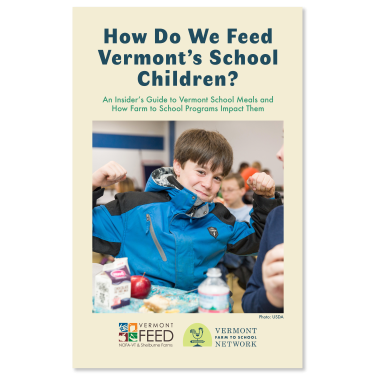
If our students are well nourished, their bodies and minds are ready to learn. School nutrition programs are as fundamental to student success as laptops, textbooks, and soccer balls, yet they are often overlooked as an essential part of the education day.
Schools in Vermont serve meals to more than 50,000 Vermont students with an investment of $50.3 million each year—$15.5 million of that money is spent on food. That is a tremendous opportunity to nourish kids, improve readiness to learn, develop healthy eating habits, provide new markets to farmers, and strengthen school culture and local communities.
School meal programs have a significant impact on reducing childhood hunger. One in seven Vermont children live in food insecure homes, where the pantry may often be bare. Children who arrive at school hungry, or who have poor health habits, have less academic success. These liabilities can follow them throughout their entire lives.
Almost 25% of Vermont schools now have universal school meals, served at no cost to families, eliminating the stigma of qualifying for school meals.
Partnering school meal programs with farm to school programs is an effective way to improve meal quality, increase participation and connect students with the source of their food and the nourishment it provides. This “virtuous cycle” also creates new local markets for farmers and improves local economies and food security. Close to 80% of Vermont schools have at least some farm to school activity, and yet there is much more opportunity for growth.
This guide outlines how Vermont schools feed our children and how farm to school programs can improve those meals. Published September 2019 by Vermont FEED and the Vermont Farm to School Network.